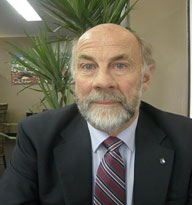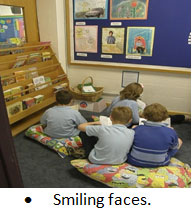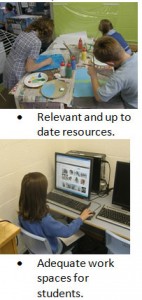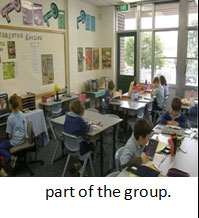Ms Ellen Cornish and Dr Don W Jordan
Our classroom experience has shown us that the many benefits of moving away from rote learning to an integrated learning classroom, is that skills, values and understandings can best be taught and assessed within meaningful ‘connected’ contexts. Based on our understanding of students’ needs, interests, prior knowledge and experience, we planned a set of broad understandings to help frame our unit of work. These understandings – though specific to the topic – incorporated some of the key concepts that students explore with increasing sophistication as they move through school. The following is an example of what our classroom planning and teaching towards enhancing understanding in an integrated classroom looks like, sounds like, and feels like, together with a suggested unit of work on the human body, feel good feel great.

Integrated learning advantages teachers and students by:
· Reflecting, more closely, the interdependence between all aspects of life in the real world
· Challenging learners to use and develop their thinking as they work to make connections and see the ‘big picture’
· Catering to the various learning styles and preferences held by students
· Managing an increasing crowded curriculum
· Meeting outcomes in context
· Making more ‘sense’ to the school day – as activities have stronger links with each other
· Providing students with a greater degree of control over learning
· Encouraging staff to plan and work in teams
· Structuring a meaningful context for the teaching and assessment of outcomes across key learning areas
· Enabling students to transfer knowledge, skills and values across content and experiences
· Skilling students to process and respond to experience in a range of ways
· Linking purposes with activities more explicitly
· Enriching understanding, enjoyment and reflection in teaching and learning.
The essence of this approach to planning is the relationship between those learning areas concerned with ‘the world around us’ (science, technology, health, and environmental and social education) and those areas through which we explore and come to understand that world (language, mathematics, art, drama, dance, music and aspects of technology. Kath Murdoch (2003, P.1)
Creating an Integrated Classroom
References
Murdoch, K. (2003), Classroom Connections; Strategies for Classroom Learning. Australia: Publishing Solutions.
Glossary
Overarching Goals: Goals which overshadow the whole topic.
Tuning In: Finding out what the students already know about the topic, as well as what they would like to find out in order to stimulate their interest and enthusiasm for the topic.
Brainstorm: group discussion and sharing of ideas.
Guiding Questions: questions related to the topic which promote thought as well as refining the investigation to be undertaken.
Graphic Organiser: Charts which help visually organise information (there are many examples, including Y charts, T charts, fish bones, placemats, concept maps, flow charts etc. on the internet)
Rubrics: Teacher or student generated charts based on the topic being studied to assist with self-assessment.
Formative Assessment: Teacher assessment, as well as student self-assessment which can be demonstrated through drama, oral presentations, written material, information technology, art and craft etc.
Summative Assessment: System and school based testing.
Culmination: The final part of the topic where students demonstrate their understandings using a variety of methods including drama, information technology, oral presentations, written material, art and craft etc.
โดย Ellen Cornish และ Dr Don W Jordan
จากประสบการณ์ในชั้นเรียนของเราได้แสดงให้เราเห็นว่าประโยชน์ของการเปลี่ยนการเรียนการสอนจากแบบท่องจำ มาเป็นการเรียนแบบบูรณาการในชั้นเรียนนั้น ไม่ว่าจะเป็นด้านทักษะ ด้านคุณค่าแห่งการเรียนรู้ และความเข้าใจ ก็จะสามารถประเมินได้อย่างมีเหตุมีผล และ “เชื่องโยง” กับเนื้อหา ทั้งนี้การเรียนแบบนี้จะต้องขึ้นอยู่กับความเข้าใจในนักเรียนของเรา ทราบถึงความต้องการของนักเรียน ความสนใจ ประสบการณ์และความรู้เบื้องต้นที่นักเรียนมีมาเป็นพื้นฐาน เราจะต้องวางโครงร่างความเข้าใจเพื่อช่วยในการวางแผนการสอน ความเข้าใจนี้เป็นไปตามหัวข้อเรื่องที่จะเรียนแต่ประสานร่วมกับประเด็นสำคัญที่นักเรียนจะสามารถเปิดโลกทัศน์ได้ตามความสนใจของนักเรียน กรณีต่อไปนี้เป็นตัวอย่างที่ดีเกี่ยวกับการวางแผนห้องเรียนและวางแผนการสอน โดยเน้นและให้ความสำคัญกับความเข้าใจ ระบุให้เห็นว่าในการเรียนการสอนแบบบูรณาการควรจะมีหน้าตา ลักษณะอย่างไร พร้อมกันนั้นกรณีศึกษานี้ได้ให้แบบเสนอแนะเกี่ยวกับเรื่องอากับกิริยาของนักเรียน เมื่อรู้สึกใช่ รู้สึกดี ไว้ด้วย
การเรียนรู้แบบบูรณาการสามารถพัฒนาครูและนักเรียนได้จาก
· การสะท้อนภาพให้เห็นอย่างชัดเจนขึ้น โดยคำนึกถึงแง่มุมต่างๆในชีวิตและในโลกความเป็นจริง
· ท้าทายให้ผู้เรียนได้ใช้และพัฒนาทักษะการคิด ในขณะที่ผู้เรียนเรียนรู้เพื่อเชื่องโยงให้เห็น “ภาพรวม”
· เหมาะสมกับผู้เรียนหลากหลายรูปแบบและสามารถจัดการเรียนรู้ได้ตามความชื่นชอบของนักเรียน
· การจัดการหลักสูตรที่หนาแน่นขึ้นได้
· บรรลุผลลัพธ์จากเนื้อหา
· ชีวิตประจำวันในโรงเรียนดูมีความ ”เข้าท่า” มากขึ้น เนื่องจากกิจกรรมต่างๆ เชื่องโยงกันมากขึ้น
· การให้นักเรียนสามารถควบคุมการเรียนรู้ของตัวเองได้มากขึ้น
· สนับสนุนให้เจ้าหน้าที่ในโรงเรียนวางแผนและทำงานเป็นทีม
· การจัดโครงสร้างเนื้อหาที่มีความสมเหตุสมผลสำหรับครูและการประเมินวัดผลของผลที่ได้รับกับพื้นที่การเรียนรู้ที่หลากหลาย
· นักเรียนสามารถแลกเปลี่ยนความรู้ ทักษะและคุณค่าของความรู้จากเนื้อหาและประสบการณ์
· สร้างทักษะนักเรียนให้พัฒนาและตอบสนองกับประสบการณ์ต่างๆ ได้หลากหลาย
· เชื่องโยงวัตถุประสงค์กับกิจกรรมได้อย่างชัดเจนขึ้น
· การเกิดความเข้าใจที่สมบูรณ์ รู้สึกสนุกและสามารถสะท้อนภาพการเรียนการสอนได้
หัวใจสำคัญในการวางแผนการสอนตามแนวทางนี้คือการจัดความสัมพันธ์ที่เชื่องโยงระหว่างสิ่งที่เกี่ยวข้องกับสิ่งที่เรียนกับ “โลกรอบตัวเรา” (วิทยาศาสตร์ เทคโนโลยี สาธารณสุข และสิ่งแวดล้อม และสังคมศึกษา) และพื้นที่อื่นๆ ที่เรามีส่วนเกี่ยวข้องหรือโลกที่เราต้องเข้าใจ (ภาษา คณิตศาสตร์ ศิลปะ ละคร ดนตรี และแง่มุมของเทคโนโลยี) Kath Murdoch (2003, P.1)
การสร้างชั้นเรียนแบบบูรณาการ
|
ชั้นเรียนแบบบูรณาการ
เชื่องต่อความรู้เดิมกับความรู้ใหม่
กระตุ้นให้เกิดการคิดแบบสะท้อน
ทำให้การเรียนรู้มีความหมาย
ตระหนักถึงข้อแตกต่างของแต่ละคน |
มีลักษณะอย่างไร
– |
มีโสตสำเนียงอย่างไร
|
ให้ความรู้สึกอย่างไร
|
หนังสืออ้างอิง
Murdoch, K. (2003), Classroom Connections; Strategies for Classroom Learning. Australia: Publishing Solutions.
อภิธานศัพท์
เป้าหมายครอบคลุม (Overarching Goals): เป้าหมายที่ครอบคลุมหัวข้อทั้งหมด
ปรับเข้าสู่บรรยากาศ (Tuning In): ค้นหาว่านักเรียนรู้อะไรอยู่แล้วในหัวข้อนี้ ในขณะเดียวกันค้นหาว่านักเรียนต้องการอยากรู้อะไร เพื่อกระตุ้นให้นักเรียนสนใจและมีความกระตือรือร้นกับหัวข้อนั้น
ระดมสมอง (Brainstorm): การแลกเปลี่ยนในกลุ่มและวิพากท์เพื่อให้ได้ความคิดที่หลากหลาย
คำถามเชิงชี้แนะ (Guiding Questions): คำถามที่เกียวกับหัวข้อที่เรียนรู้ ที่ชี้แนะหรือสนับสนุนให้เกิดการคิด ค้นหา และการมีส่วนร่วมในการเรียนรู้
สื่อเสนอให้เห็นโครงสร้าง (Graphic Organiser): สื่อหรือกราฟหรือภาพประกอบที่ช่วยให้นักเรียนเห็นการจัดการเชิงรูปธรรม เช่น กราฟตัววาย Y กราฟตัวที T กราฟก้างปลา แผนที่โครงสร้าง ผังการจัดการ สิ่งเหล่าหาได้ไม่ยากในอินเตอร์เน็ท
โครงร่างระบบการเรียนรู้แบบรูบิค (Rubrics): ครูหรือนักเรียนสร้างโครงร่างการเรียนรู้จากหัวข้อที่กำลังเรียนอยู่เพื่อช่วยประเมินตัวเองในกระบวนการเรียนรู้
การประเมินอย่างไม่เป็นทางการ (Formative Assessment): การประเมินผลของครูและนักเรียนในการประมเนตนเอง ที่สามารถทำได้โดยผ่านการแสดงออกเช่น การเล่นละคร การนำเสนอหน้าห้อง การผลิตงานเขียน หรืการใช้สื่อเทคโนโลยี รวมทั้งผ่านงานศิลปะต่างๆ
การประเมินแบบสรุปความ (Summative Assessment): การทดสอบโดยยึดระบบและตามกรอบของโรงเรียน
ประเด็นสำคัญที่สุด (Culmination): ส่วนสุดท้ายของหัวข้อที่นักเรียนจะแสดงออกถึงความเข้าใจของตัวเองโดยผ่านวิธีการต่างๆ เช่น การเล่นละคร การนำเสนอหน้าห้อง การผลิตงานเขียน หรืการใช้สื่อเทคโนโลยี รวมทั้งผ่านงานศิลปะต่างๆ




